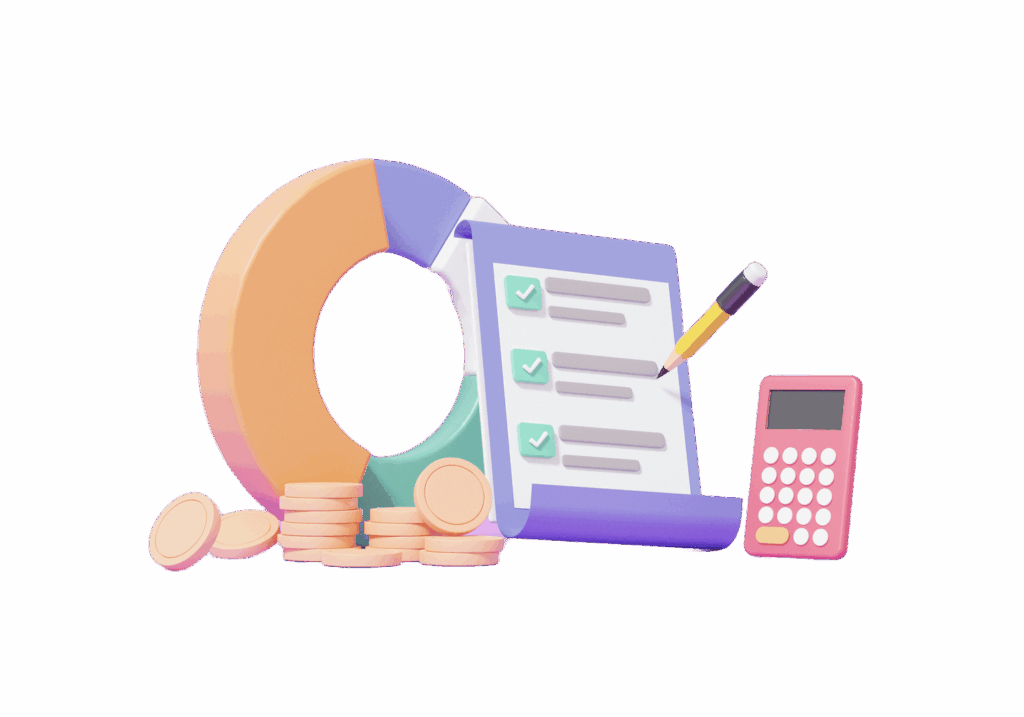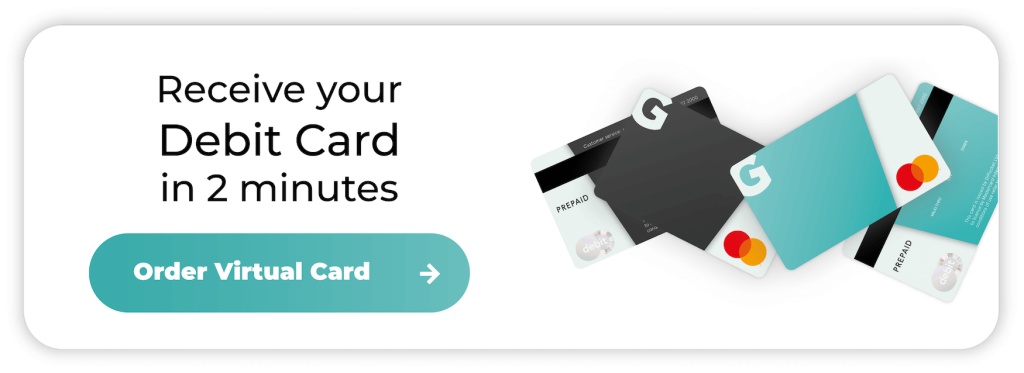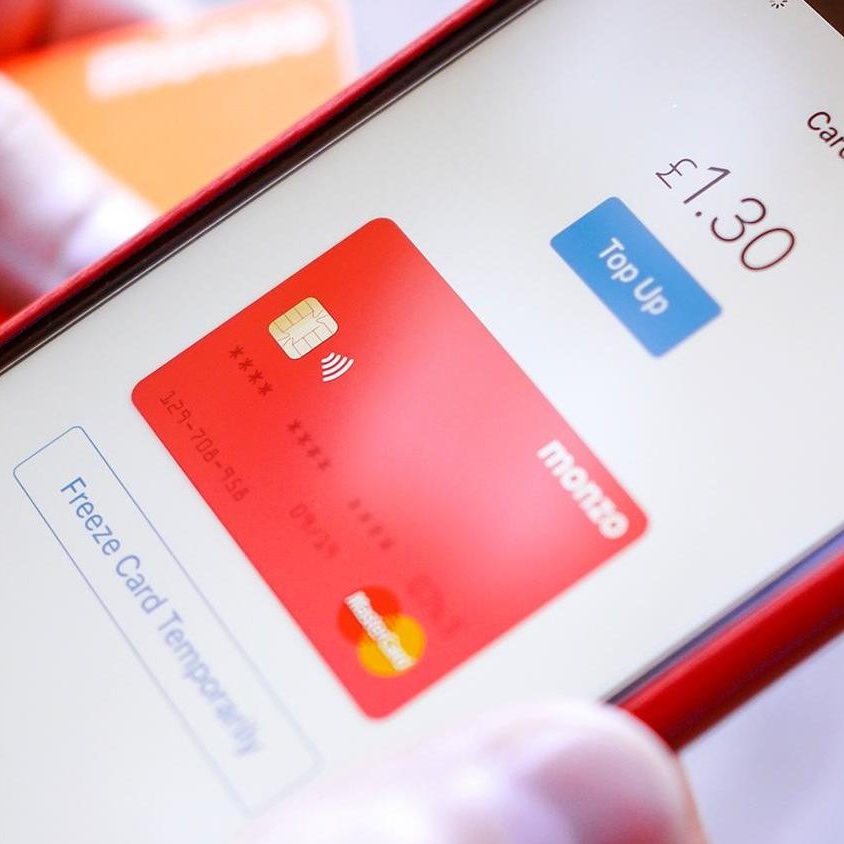
Budgeting isn’t easy. Especially considering we’re bombarded with up to 10,000 adverts every single day, encouraging us to spend money. And often, what we’re buying isn’t even what we need. With the average total debt per UK household now at nearly £64,000, budgeting has never been more crucial.
There are many ways in which you can get a grip on your finances — from creating a budget planner spreadsheet in Excel to downloading an expense management app on your mobile phone. But there is another way to do this too.
Prepaid cards have come a long way since they were launched in the mid-90s, and they now have many other uses besides gifting. As well as acting as “Cash Passports” and travel cards, you can now use prepaid cards to budget and save money, thanks to their debit card-like features.
In this article, we’ll explain how to use a prepaid debit card to control your spending.
How can prepaid cards for budgeting?
Some of the ways to budget using a prepaid card include limiting the amount you load onto the card, depositing funds directly from your employer and keeping track of your finances by logging into your prepaid card account regularly.
In addition to this, you can avoid paying the fees that eat into your allocated monthly expenditure, and you could also try using your prepaid card as a savings account.
Continue reading to find out more about using prepaid cards for budget purposes.
What are prepaid debit cards?
Prepaid debit cards work like regular debit cards in that you can use them to make purchases in shops and online. The difference is that they are not tied to a current account. Instead, you load cash onto the card using a variety of methods, such as online transfers or at certain retail outlets. They don’t come with an overdraft, so you can only spend your own money – which avoids the dangers of borrowing and debt that many people find themselves in when using Buy Now, Pay Later. This means they’re ideal for people with a poor credit history and for teaching children and teenagers about money management.
Five ways to budget using a prepaid card
As mentioned above, you can use a prepaid card to manage your expenditure. We’ve outlined some ways in which you can do this below. 
One: Don’t load more money than necessary
When budget planning, the first thing to do is make a list of all your expenses, starting with the most important. Some of these could include your rent or mortgage, household bills and vehicle running costs. Remember to leave some wiggle room for expenses that vary month to month, like gas and electricity bills. Your other expenses are your essential purchases, like what you spend on things like food, clothing and transport. If you’re saving for a new car or a holiday, remember to account for this in your budget too.
Then, add up all your expenses and deduct this from your wages. The money that’s leftover is your disposable income, and out of this, you can give yourself a weekly allowance to spend on things like entertainment and exercise classes.
Once you’ve decided on your allowance, load that amount onto your prepaid card and only use this for your daily spending. This will help you to budget better, as you will only be able to spend what you’ve loaded onto the card. If you do this weekly, you can avoid overspending at the beginning of the month, leaving you with nothing at the end.
You will be able to use your prepaid debit card at any merchant or service provider that accepts the logo displayed on your card, for example, MasterCard. This means your prepaid card can be used in place of a traditional debit or credit card.
Two: Use direct deposit to load funds onto your prepaid card
Alternatively, you could use your prepaid debit card to pay bills and other expenses and use your regular debit card for everyday spending.
The best way to do this is to use direct deposit to transfer your salary from your employer, or another income source, directly onto your prepaid debit card.
Many prepaid card companies will give you an incentive or waive their monthly fee if you use direct deposit (we’ll go into fees in more detail below).
To set up direct deposit, download the relevant form from your prepaid card provider’s website and give it to your employer. Once the request has been processed, your wages will be automatically loaded onto your card at the end of the pay period.
You can then arrange for your expenses to be paid using your prepaid debit card and transfer the money that’s leftover to your savings or current account.
Three: Log in to your account regularly
Most prepaid debit cards have online, mobile-friendly dashboards which are similar to bank account dashboards.
They allow you to track your monthly spending and see where you might be able to make adjustments to your budget.
Having an account dashboard means you don’t need to hold onto all of your receipts and then go through them to find out whether you’re sticking to your budget.
Some providers will even give you the option to receive email or text alerts every time you use your card. You might also be able to get regular balance updates, so you can stay on top of your purchases as you go, rather than blindly spending money until one day your card is declined.
Four: Avoid fees
It’s a common misconception that prepaid debit cards always sting you with huge fees. While it is true that some providers charge fees that can eat into your budget, many are largely fee-free.
With that in mind, choose a prepaid debit card provider that either won’t charge you at all or is transparent about its fees, so you can make an informed decision about whether you’re prepared to pay them.
Some of the most common prepaid debit card fees include:
- ATM withdrawal fees — With most prepaid cards, you can withdraw cash at ATMs for free, providing they belong to an ATM network that doesn’t charge. You may, however, be charged for out-of-network withdrawals.
- Balance check fees — While it’s almost always free to check your balance on your mobile device, you may be charged for checking your balance at an ATM.
- Card purchase fee — If you apply for your prepaid card online, you won’t usually be charged a fee. However, some issuers may charge a small amount when you obtain your card from a shop.
- Foreign transaction fees — As with banks and credit card issuers, you might incur an extra charge for foreign transactions. This will typically be a small percentage of the transaction total.
- In-person withdrawal fees — Some providers will charge you for withdrawing cash in person at bank branches.
- Load/reload fees — Depending on how you load money onto your prepaid debit card, you may be charged a load or reload fee.
- Monthly maintenance fees — Like some banks, many prepaid card providers charge a monthly maintenance fee.
- Replacement card fee — If you lose your card, it’s likely you’ll have to pay for a replacement.
- Transfer fees — Depending on your provider, you may be charged for transferring funds from another prepaid card.
It’s useful to note that some prepaid debit card providers may reduce or waive their fees for maintaining a minimum balance or making a minimum number of monthly transactions.
Five: Use your prepaid card as a savings account
Rather than using your prepaid debit card for expenses or everyday spending, you could use it to save up for something special, such as a new car, a holiday or home improvements.
Again, you can use direct deposit to have your income paid directly onto your prepaid card and then transfer everything but the amount you want to save into a different account.
When deciding how much to save each month, determine the cost of what it is you’re saving for and how much time you have to reach this goal. Then work out how much you need to set aside each month to meet your goal and budget for everything else from there.
To encourage saving, some prepaid debit cards come with a savings account attached. This makes it even easier to budget for future purchases, as you can make automated transfers each month from your prepaid card into the savings account that’s tied to it.
Summary
Budgeting isn’t easy, but with the average total debt per UK household now at nearly £64,000, keeping control of your finances has never been more crucial.
You can manage your expenditure in a variety of ways, including using prepaid cards. Some of the ways to budget using a prepaid card include limiting the amount you load onto the card, depositing funds directly from your employer and keeping track of your finances by logging into your prepaid card account regularly. In addition to this, you can avoid paying the fees that eat into your allocated monthly expenditure, and you could use your prepaid card as a savings account.
Prepaid debit cards work like regular debit cards in that you can use them to make purchases in shops and online. The difference is they are not tied to a current account, and they don’t come with an overdraft.
Here are some more details about the five ways to budget using a prepaid card:
- One: Don’t load more money than necessary — Add up all your expenses and deduct this from your paycheck. Allocate yourself a weekly allowance by transferring the money that’s left over onto your prepaid card and only use this for your daily spending.
- Two: Use direct deposit to load funds onto your prepaid card — Alternatively, use your prepaid card to pay bills and other expenses, and use your regular debit card for everyday spending. The best way to do this is to use direct deposit to transfer your income directly onto your prepaid debit card. Then arrange for your expenses to be paid using your prepaid debit card and transfer the money that’s left over to your savings or current account.
- Three: Log in to your account regularly — Track your monthly spending on your account dashboard so you can see where you might be able to make adjustments to your budget. Some providers will also give you the option to receive email or text alerts every time you use your card and get regular balance updates.
- Four: Avoid fees — It’s a common misconception that prepaid debit cards always sting you with huge fees. While it is true that some providers charge fees that can eat into your budget, many are largely fee-free. So choose a prepaid debit card provider that either won’t charge you at all or is transparent about its fees. Some prepaid debit card providers may reduce or waive their fees for maintaining a minimum balance or making a minimum number of monthly transactions.
- Five: Use your prepaid card as a savings account — Rather than using your prepaid debit card for expenses or everyday spending, you could use it to save up for something. Again, you can use direct deposit to have your income paid directly onto your prepaid card and then transfer everything but the amount you want to save into a different account. Some prepaid debit cards come with a savings account attached, so you can make automated transfers each month from your prepaid card into the savings account that’s tied to it.




